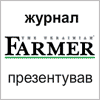Wheat market sees more price action

Wheat saw a pick-up in price action last week, with another drop to test major supports that quickly reversed back up - then followed by a strong day that then saw prices erode back to unchanged. Plenty of action but not much direction. World wheat prices continue to erode, with prices slogging down to the summer’s lows.
Australia has become a bigger presence in the Southeast Asian market where their prices are now cheaper than U.S. prices.
The threat of more Argentine wheat hitting the pipeline also subdued bullish enthusiasm.
The European Union’s Strategy Grains increased soft wheat export estimates by another 800 TMT (despite the slow start this year) to 27.6 MMT. They explain that the weaker euro and cheaper shipping costs will open up more markets for them, and indeed they have. We’ve recently seen European wheat sold into Mexico and Indonesia, two markets that are normally dominated by U.S. sources.
The United Kingdom isn’t going to get left behind following a big crop there as well. The UK estimates exports will also increase and, with their lower valued sterling, are seeing prices dip below Ukraine values which will open up new business for them as well.
Wheat prices have also been influenced by increasingly adverse weather in Brazil, where the major soybean producing state of Mato Grosso appears to be stuck in a dry pattern with increasing temps as the soybean crop tries to get planted and growing. Beans had a strong rally late last week that helped to support both the corn and wheat markets.
Argentina has quickly become a much bigger player in the world market for all of the major grains after the newly elected president eliminated export taxes for wheat and corn and lowered them for soybeans - and then devalued the peso to boot. The question is how aggressive will Argentine farmers be in moving stocks of grain they’ve been holding. Likely they will wait until they feel the peso has found is bottom and will no longer serve as a currency hedge and then open the bin doors. Wheat stocks are minimal anyway from years of reduced plantings, but corn and bean supplies are more abundant and will help reduce the impact of weather problems in Brazil.
With the holiday season upon us, trading will likely be quiet until January. Two weeks can be a long time if weather worsens in Brazil, so volatility could be an issue.
Technically, wheat looks like it has established an even more narrow trading range, with Thursday’s low and Friday’s high being the parameters. If and when those levels are taken out, the broader range that has been in place for the last couple of months will likely still be strong support and resistance. Until we get the Northern Hemisphere’s crop breaking dormancy, prices will likely stay within the broader trading range - and most likely hover in the lower half of the range as world prices continue to leak lower and competition is as tough as ever.
UAC Information Center by information Agriculture.com
- 1353 reads







